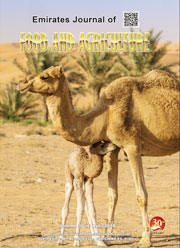Extraction and characterization of oil from Mudong bayberry (Myrica rubra) kernels
DOI:
https://doi.org/10.9755/ejfa.2016-05-508Keywords:
GC-MS; Kernel oil; Mudong bayberry; Organic solvent leaching extraction; Response surface methodologyAbstract
The extraction of oil from Mudong bayberry (Myrica rubra) kernels was performed using the organic solvent leaching method. The extraction
time, liquid/solid ratio, and temperature were optimized by the response surface methodology. The fatty acid content of kernel oil was
also analyzed using a gas chromatography-mass spectrometry (GC-MS). The results showed that the optimal extraction time, liquid/solid
ratio, and temperature for oil yield were 140 min, 7.5:1(v/w), and 48.5°C, respectively. Under optimum conditions, the oil yield was
62.52% (w/w). The GC-MS analysis showed that oleic acid accounted for 47.90% and linoleic acid accounted for 37.30% of total fatty
acids in the Mudong bayberry kernels. Furthermore, a small amount of linolenic acid (0.12%), 11-eicosenoic acid (0.29%), and palmitic
acid (0.88%) were also found in the extracted oil of Mudong bayberry kernels. This study revealed that Mudong bayberry kernels have
a high lipid content, and the percentage of unsaturated fatty acids found is close to those found in other varieties of bayberry and olive
oil. Mudong bayberry kernels have a great potential as alternative plant oil in the world.










 .
.